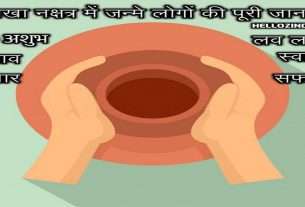The following page describes how Wheat can help you to fight various diseases like Tooth Disorders, Constipation, Skin Diseases, Digestive System Disorders, Circulatory Disorders. Read the following passages about Wheat advantages and find Wheat effects on your body-
Wheat – Health Benefits
Wheat advantages are numerous. Following is the list of benefits which Wheat gives you. The following paragraph focuses on Wheat health benefits.
1. Benefits of Wheat in Tooth Disorders or Treatment of Tooth Disorders with Wheat- Wheat is valuable in the prevention and cure of pyorrhoea. It takes time to eat wheat and as it is generally taken with other foods, it compels the chewing of other foods also. This not only provides the needed exercise for the teeth and gum but also a great aid to digestion. Wheatgrass juice acts as an excellent mouth wash for sore throats and pyorrhoea. It also prevents tooth decay and toothaches. Therefore it is beneficial to chew iv heat grass which draws out toxins from the gums and thus checks bacterial growth.
2. Benefits of Wheat in Constipation or Treatment of Constipation with Wheat- The bran of wheat, which is generally discarded in milling of the flour, is more wholesome and nourishing than the flour itself. It is an excellent laxative. The laxative effects of bran are much superior to those of fruits or green vegetables as cellulose of the latter is more easily broken down by bacteria while passing through the intestine. The bran is highly beneficial in the prevention and treatment of constipation due to its concentration of cellulose which forms a bulk-mass in the intestines and helps easy evacuation due to increased peristalsis.
3. Benefits of Wheat in Skin Diseases or Treatment of Skin Diseases with Wheat- It has been scientifically proved that chlorophyll arrests growth and development of harmful bacteria. Wheatgrass therapy can be effectively used for skin diseases and ulcerated wounds as by retarding bacterial action, it promotes cell activity and normal re-growth. By drinking wheatgrass juice regularly, an unfavourable environment is created for bacterial growth. A poultice of wheatgrass juice can be applied on the infected area, as it is an able sterilizer. Externally, wheat flour is useful as a dusting powder over an inflamed surface as in burns, scalds and various itching and burning eruptions. Whole wheat flour, mixed with vinegar, boiled and applied outwardly removes freckles.
4. Benefits of Wheat in Digestive System Disorders or Treatment of Digestive System Disorders with Wheat- Wheatgrass juice used as an enema helps detoxify the walls of the colon. The general procedure is to give an enema with lukewarm or neem water. After waiting for 20 minutes, 90 to 120 ml. of wheatgrass juice enema is given. This should be retained for 15 minutes. This enema is very helpful in disorders of the colon, mucous and ulcerative colitis, chronic constipation and bleeding piles.’
5. Benefits of Wheat in Circulatory Disorders or Treatment of Circulatory Disorders with Wheat- The chlorophyll content present in wheatgrass enhances heart and lung functions. The capillary activity also increases while toxaemia or blood poisoning is reduced. I)ue to increased Iron content in the blood and haemoglobin, lungs function better, Oxygenation improves and the effect of Carbon-dioxide is minimised. It is for this reason that wheatgrass juice is prescribed for circulatory disorders. Wheatgrass is grown by soaking a good variety of wheat for eight to 10 hours. The water should then, be drained and grains be allowed to spout for 15 hours. Earthen pots or wooden trays can be used to grow the wheatgrass. These trays should be filled with compost manure. The wheat sprouts should be spread and the trays should be covered with a dark cloth or the trays kept away from the sunlight in a room. These trays should be sprinkled with water once or twice a day and they should be allowed to stay as such for six. to seven days until the grass grows five to seven inches high. Chewing wheatgrass is the easiest method to drink wheatgrass juice. As an alternative to chewing, wheatgrass should be cut finely and ground in a grinder with the addition of water to enable the extraction of the wheatgrass juice. This juice should be drunk within 10 to 15 minutes after extraction. In the early stages of wheatgrass therapy about 100 ml. to 150 ml. of wheatgrass juice should be taken daily. As the body becomes accustomed to its taste, the quantity of wheatgrass juice can be gradually increased until the intake is about 250 ml. to 300 ml. per day. Wheatgrass juice should be mixed thoroughly with saliva before being swallowed slowly. This juice should be drunk an hour before a meal and two to three hours after the meal.
Uses
Chappatis is the common form in which wheat is eaten in India, Pakistan and Iran. They are made from whole wheat flour, called atta. Wheat taken in the shredded form called Dalia is extremely wholesome. It has been a very favourite Indian dish in olden days. It is cooked by soaking two tablespoonfuls of crushed or shredded wheat for half an hour and then cooking it (in a slow fire till the water nearly dries up. Thereafter milk and honey may be added to taste. It is a nourishing morning breakfast food item.
Click Here for Amazing Health Benefits and Curative Properties of Wheat

